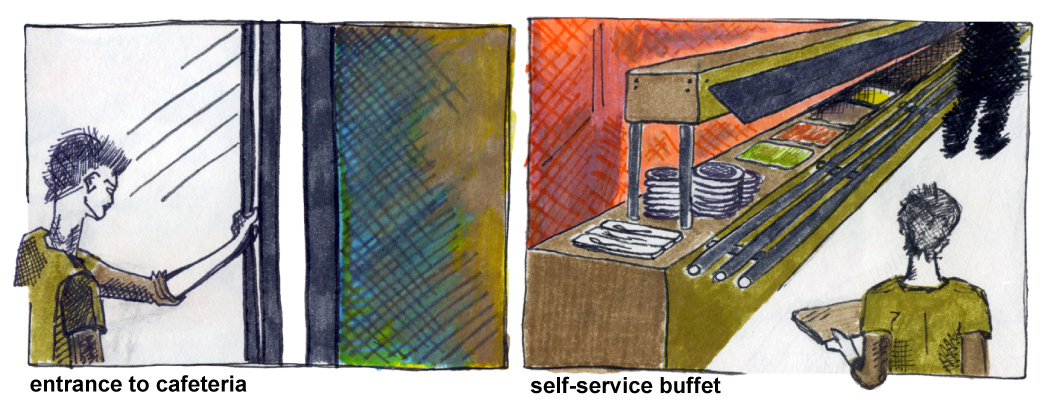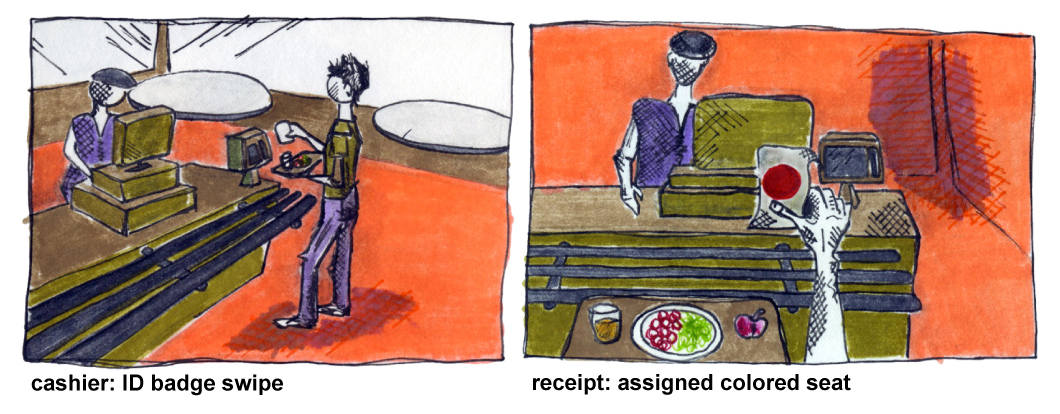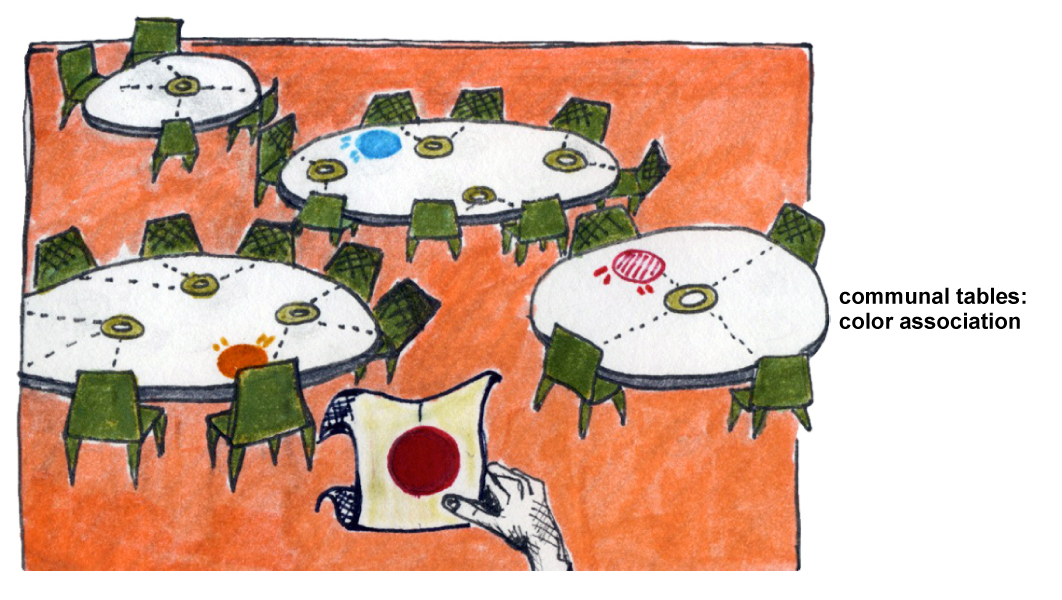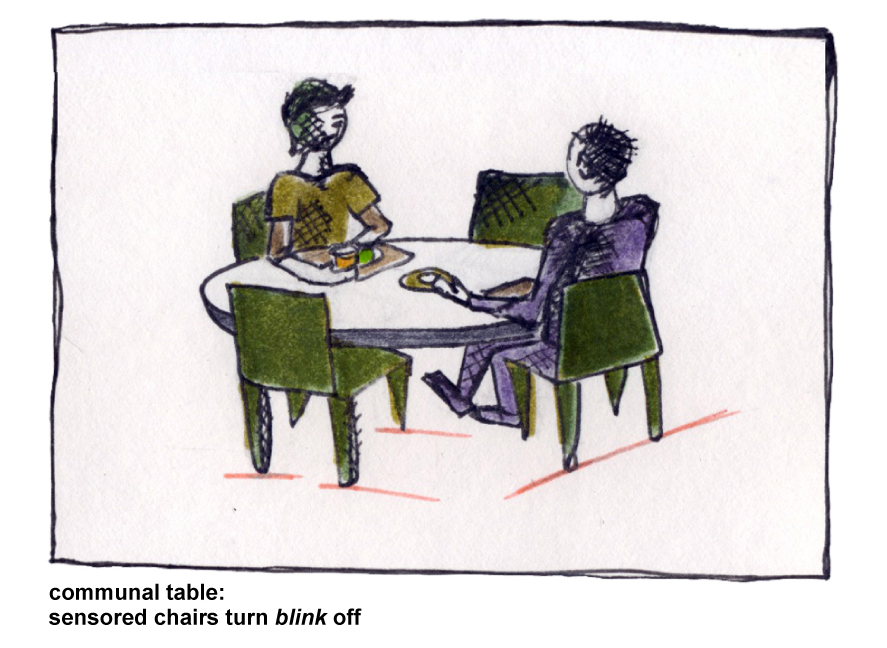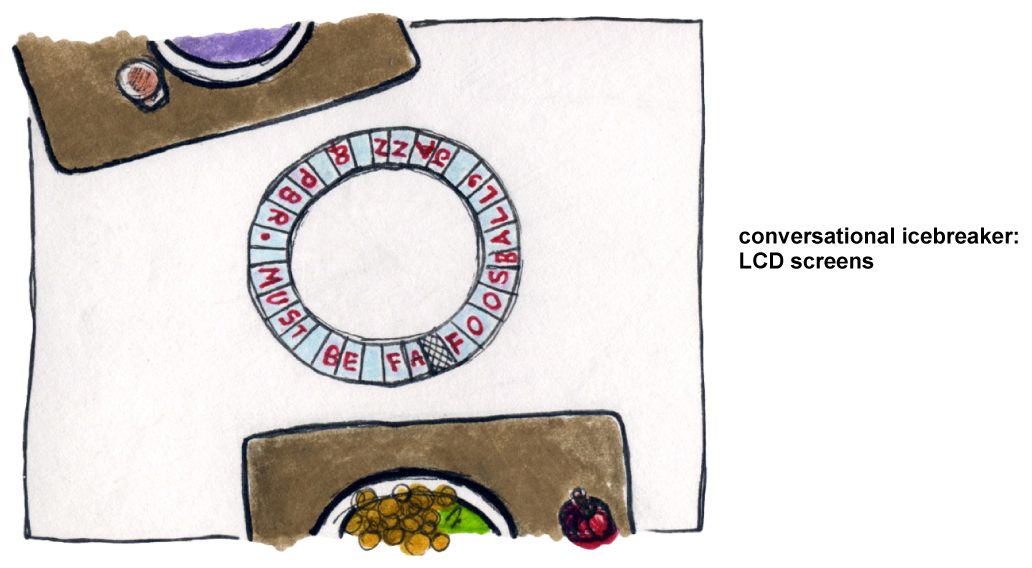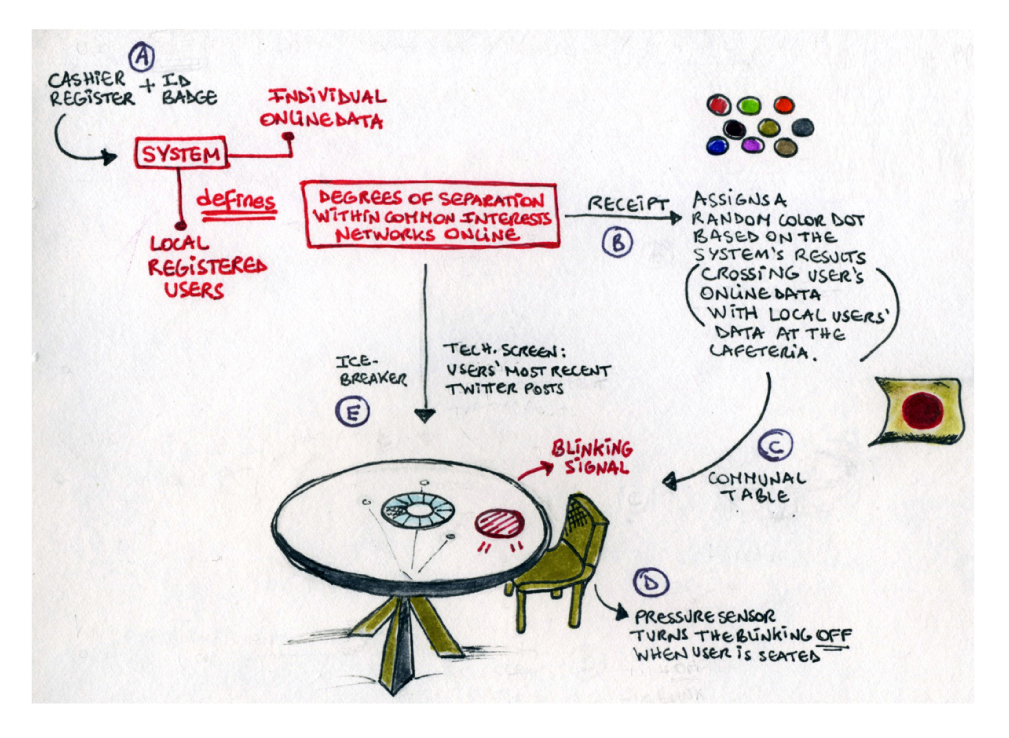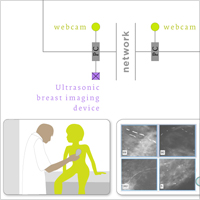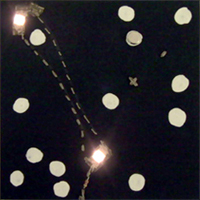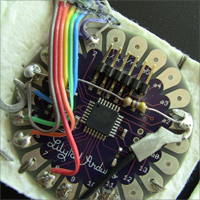This proposal looks at creating a common ground within familiar spaces by facilitating a conversation between individuals who have related interests online and who are within degrees of separation from one another or degrees of potential connection online.

This project, associative space, looks at social network behavior online and how “calm technology” can introduce aspects of online interaction into the realm of human-to-human interaction in the context of an office building cafeteria. The aim is to foster exploratory behavior by employing available information online and making it fit into individuals’ everyday lunching experience in a more salient and meaningful way that could reveal a certain common ground.
How might design interventions affect habitual experiences and social practices or flow? and, How might “calm technology” foster exploratory behavior in public spaces?
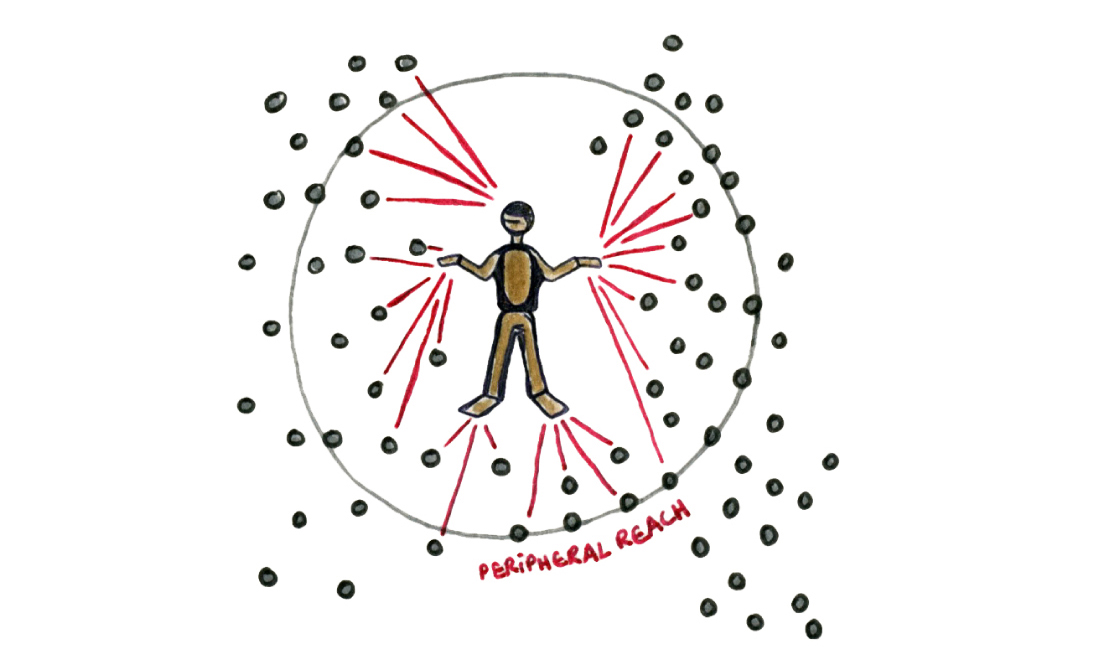
According to Weiser and Brown (1996), peripheral information describe action enabling technologies that stimulate the senses, yet remain on the periphery of our perception and are therefore encalming.
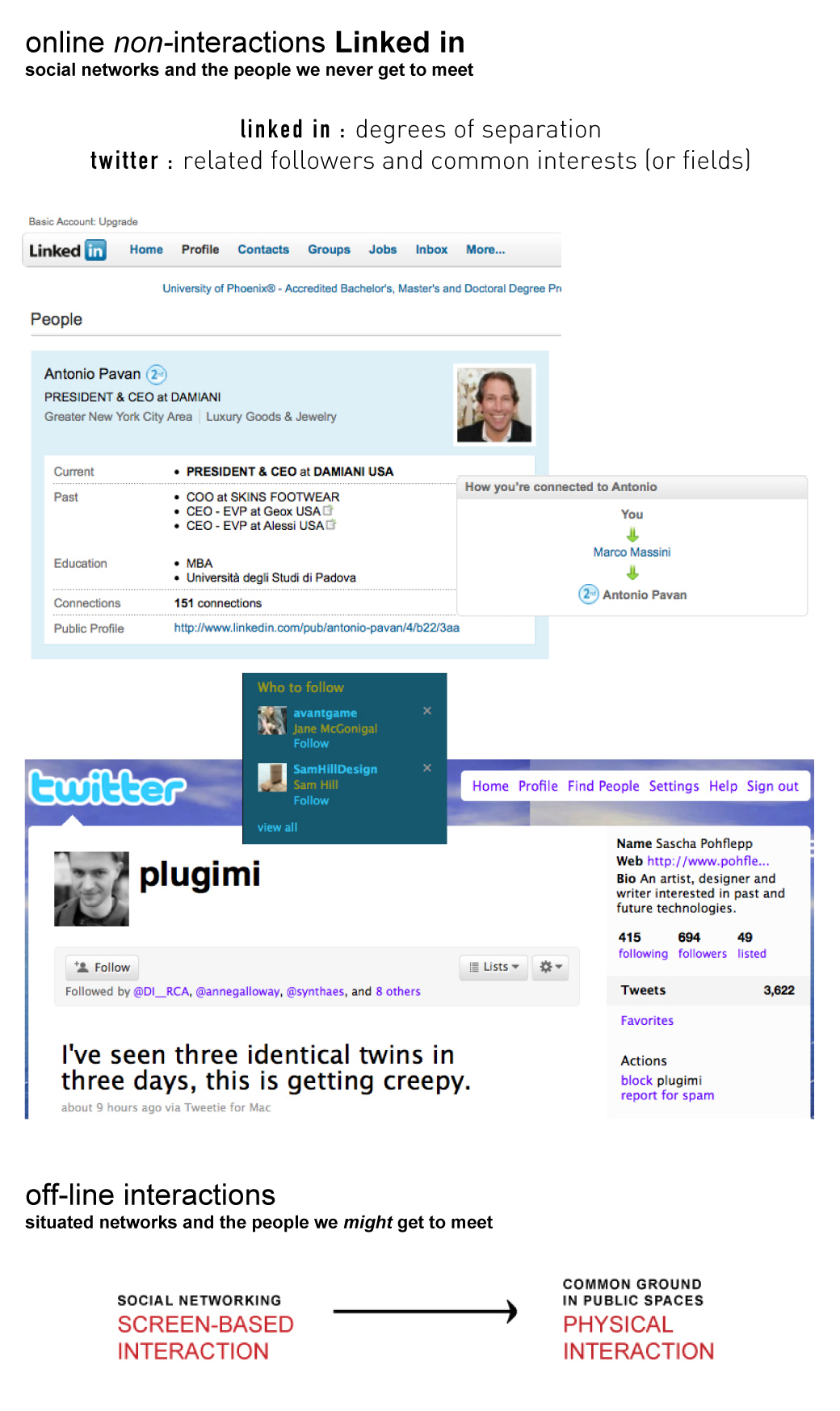
associative space: a space of dialogue
Assuming that there would be multiple organizations within a single office building with varying professional fields, and in the case of an office building cafeteria, I propose that there would be technologically enhanced communal tables that would support encounter or a cross-organizational dialogue based on on-line connections and activities. The scenario would go as such:
An individual would enter the cafeteria, as always, and gather food on their tray.
They would then pay by swiping their ID badge at the cashier, at which point, the card would be read for individual information online and crossed with data collected about individuals already seated at the cafeteria to identify locally existing associations based on common interests between individuals at the cafeteria. The result will be a colored dot assigned to the individual and shown on thier receipt this colored dot serves as a reference point to guide individuals in locating their seats. The same color would be replicated as a blinking signal on the surface of a table where an available seat happens to be in proximity of like-minded individuals.
The way the color is chosen is based on a sequence of colors to differentiate the previous person’s color from the following person’s color. This helps diminish confusion about who’s seat is which and different table sizes will afford different scales of interaction –tables of 4, 10, or more seats will offer different intimacy levels. The positioning selection aims at offering the space for potential interactions which would otherwise be difficult to achieve.
Sensored chairs would allow the blinking signal to stop when individuals take their seat.
Finally, in order to facilitate dialogue, LCD screens would be integrated in the design of the table to extend the content of first-time conversations and will serve the purpose of an icebreaker for an otherwise quasi-silent lunching experience. The strings of words will be fed by individuals’ latests Twitter posts as a way to initiate content and enact a dialogue that involves a common or related interest pre-existing between individuals.
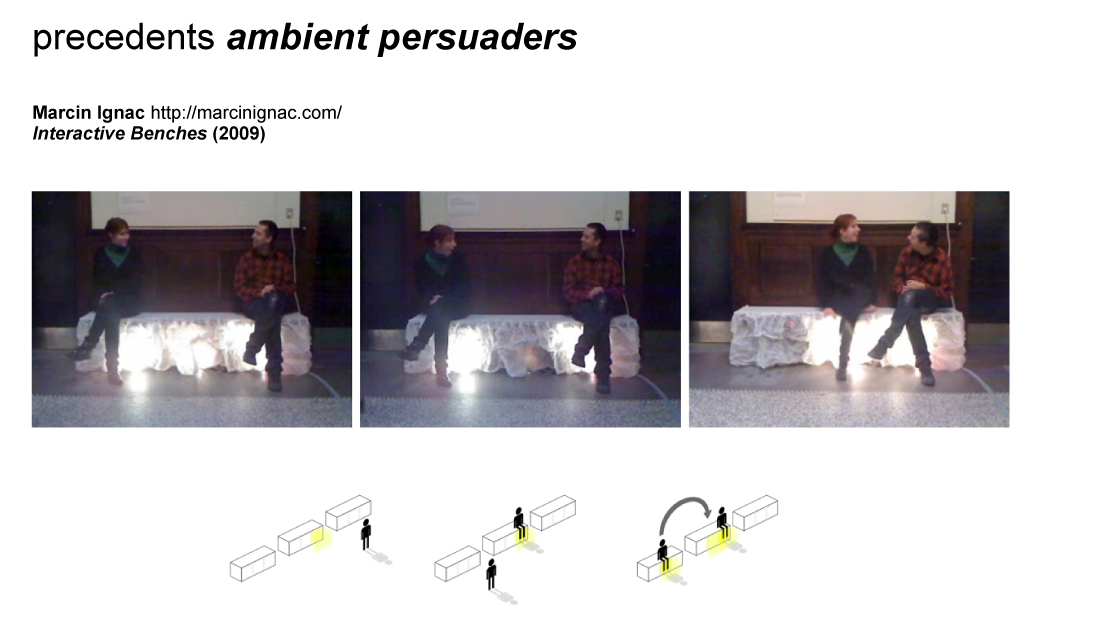
Interactive Benches is a student project that looked at influencing social behavior in public spaces by having lights glow underneath seats that were sat on and having lights blink underneath seats that were available and that separated 2 individuals as a way to persuade 2 individuals to sit next to each other and start a conversation.
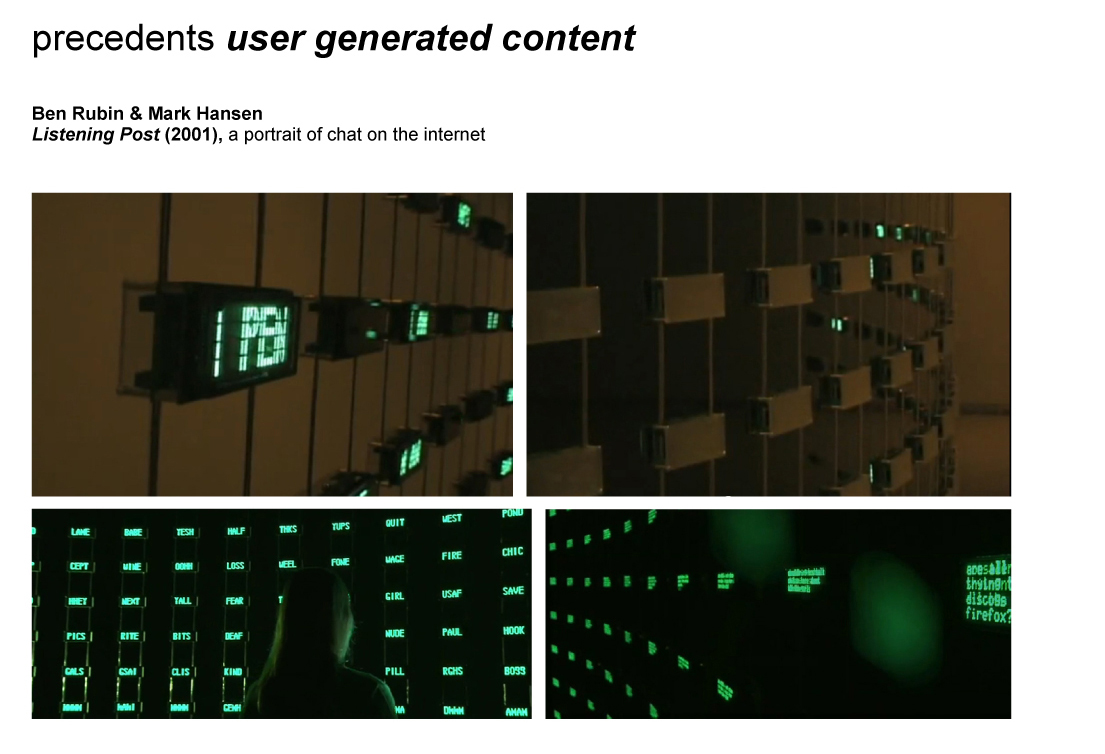
Listening Post is an installation by ben rubin and mark hansen that aimed at portraying chat on the internet by collecting user generated content online that had the keyword “I” in them, which they display through text and sound.
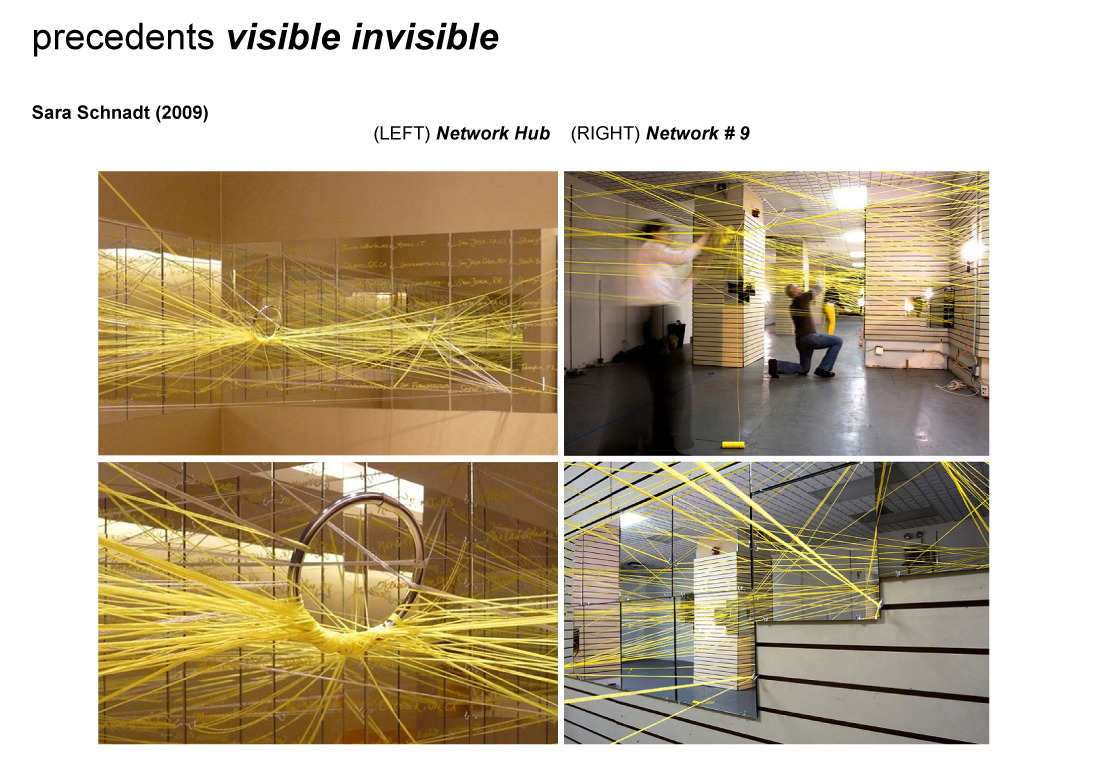
Performance artist Sara Schnadt, in her piece Network, explores the concept of invisible connections, which she weaves with electric yellow twine to reveal pre-existing interactions in space.

